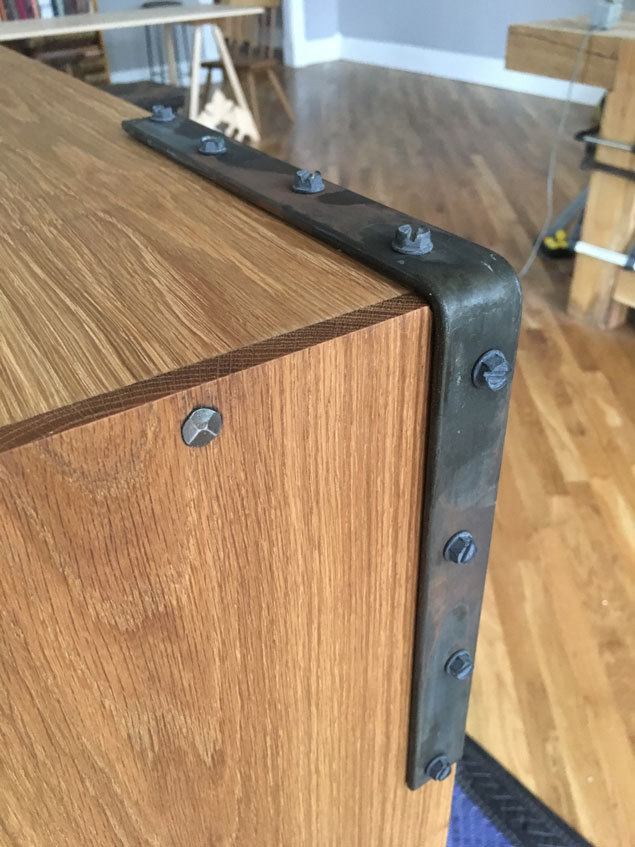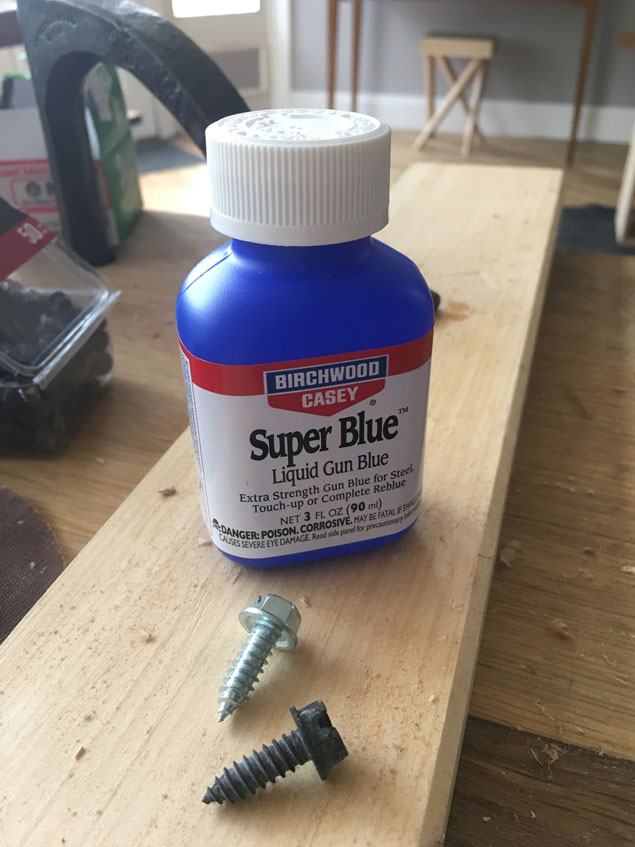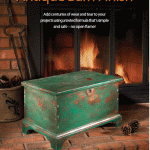We may receive a commission when you use our affiliate links. However, this does not impact our recommendations.
I use blacksmith-made hardware whenever I (or my customers) can afford it. But if you’re on a budget or have hundreds of pieces of hardware for a project, it’s time to visit the gun store.
My favorite way to blacken steel, iron or even zinc-plated hardware is to brush on a thin coat of liquid “gun blue” – typically a combination of selenious acid, nitric acid and cupric sulfate. If you brush on a thin coat it will blacken a ferrous metal almost instantly, including zinc-plated hardware. The coating is fairly durable and looks like it has been tarnished by years of age.
One coat will color the metal inconsistently, which is the way I like it. You can make the color more uniform by adding a second or third coat.
It’s nasty stuff – check out the MSDS on any of the brands. Wear nitrile gloves, safety glasses and whatever else you have on hand. It will burn your skin, especially if you have a small cut.
For large pieces of hardware, such as the corner bracket shown in the photos, I simply brush on the gun blue solution with a chip brush. To darken screws, bolts etc. I dip them in a shallow bath of the solution. Two tablespoons of gun blue can blacken almost 150 screws before the solution is exhausted.
After applying the gun blue, wash off the part in cold water and let it dry. Then I add a light coat of oil to add a little sheen and some more rust protection.
I’ve been using liquid gun blue on hardware for almost 20 years now, and the color is still the same dark blue-black today as it was when I first applied it. If you do need to touch up pieces that see a lot of abuse, they even make touch-up pens filled with gun blue instead of ink.
I know there are other chemicals and products out there that are safer than liquid gun blue, but I have yet to find any that are as fast or effective.
— Christopher Schwarz
Here are some supplies and tools we find essential in our everyday work around the shop. We may receive a commission from sales referred by our links; however, we have carefully selected these products for their usefulness and quality.












The steel I purchase at the metal supply store is usually already a low sheen black/blue in color and, is far less expensive than HD, so no bluing required. But yes I’d have to bend any strap steel to make an L bracket. I also like to hammer on the steel with a ball peen to make it look like it’s been worked, which also gives it a more rustic look.
I use the same product to tarnish and ‘age’ brass. Yes, yes…most of the literature says it won’t work on brass…but apparently no one told the brass.
I find if I leave it on to dry, the brass will almost blacken. If I want a more mottled effect, I can begin to wipe it before the bluing is totally dry.
You can rub it out with steel wool to get an in between look….not shiny but not too dark.
The problem with Gun Blue is that it comes in small quantities and is expensive, there should be some kind of industrial preparation with the same effect.
A great source for all sorts of products for bluing, from the excellent Birchwood Casey product mentioned to the older processes that involve lots of lovely noxious fumes, hot chemical baths, and black iron tanks, go to the Brownell’s site and the section on Metal Prep & Coloring. They also have materials for browning, Parkerizing, etc.
Be wary. Metal finishing is yet another slippery slope of craft, and you may soon find yourself leaning over a mortar pounding animal bones to color case-harden your hinges.
Dude Chris, I like the look but those sheetmetal screws? Get some pan heads or oval heads, they’ll look so much better. And thanks for the tip!
At first I thought that you had used through-dowels for the joinery of the shelves, but those are nails–right?
Chris:
There are also “browning’ solutions available from gun supply sources. Browning was quite common among blacksmiths and gunsmiths in the 18th and 19th centuries. It puts a rich dark brown on the metal.
My best results with these solutions is with prior cleaning/de-greasing with Lacquer thinner or Acetone. They are also nasty chemicals that require gloves and good ventilation.
Chris,
My experience with gun bluing used to blacken hardware has been the same as yours. It works well, it works quickly, and the resultant finish is durable. I have used several brands of bluing agents and they all seem to work well.
The only point I would add is that the gun bluing will work best if the metal surface is cleaned well at the outset. Using a spray cleaner designed for this purpose (available anyplace that sells gun bluing) really does the trick. This type of cleaner leaves no residue on the metal surface, which helps the bluing to “take” to the metal more effectively.
Again, great comment on this use for gun bluing. It is chemically nastier than some alternatives, to be sure, but it really works well.
Hey Chris, two questions:
1. Are those just L-brackets from the hardware store or did you bend flat steel and drill holes?
2. Those look like the book shelves from ADB. Are you experimenting with leaving the backs off?
Thanks,
Shawn